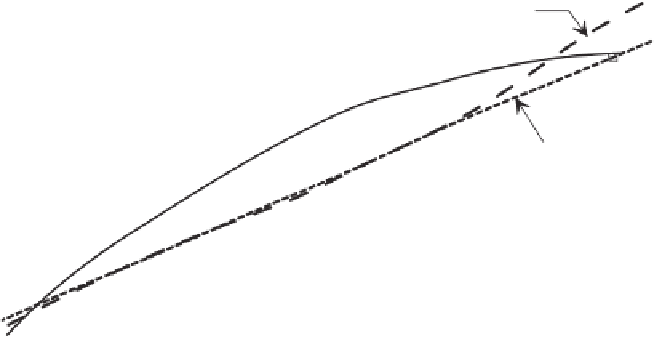Environmental Engineering Reference
In-Depth Information
8
2
√
K
m
= 1.157 + 15.78
θ
−
14.82
θ
Topp et al., (1980)
R
2
= 0.9790
6
Delta-T Devices Ltd. (1999)
Calibration equation
4
2
Measured by ML2x
0
0
0.1
0.2
0.3
0.4
0.5
0.6
Volumetric water content,
θ
Figure 4.94
Dielectric constant as function of volumetric water content when using ML2x
probe on Regina clay (after Hu et al., 2010).
8
2
√
K
m
= 1.188 + 18.077
θ
−
16.051
θ
Topp et al., (1980)
R
2
= 0.9496
6
Calibration equation
Delta-T Devices Ltd. (2005)
4
2
Measured by SM200
0
0
0.1
0.2
0.3
0.4
0.5
0.6
Volumetric water content,
θ
Figure 4.95
Dielectric constant as function of volumetric water content when using SM200
probe on Regina clay (after Hu et al., 2010).
an indication of the air-entry value and the residual suction
conditions. The air-entry value and the residual suction pro-
vide an indication of the most likely suction range to be
encountered in the field.
The soil classification properties provide the first indica-
tion of the likely SWCC for a material. The shape of the
SWCC likewise provides an indication of the likely range
of matric suctions to be encountered in the soil profile.
4.6.1.1 Reference to Hydrostatic Conditions
The depth of the water table can provide valuable informa-
tion on the likely matric suctions that might be encountered
in the field. The matric suction at the water table must
be zero. In the region immediately above the water table,
the negative pore-water pressure will tend to be hydrostatic
and this provides an indication of the likely matric suction
values. The matric suction profile will tend to be strongly







































Search WWH ::

Custom Search